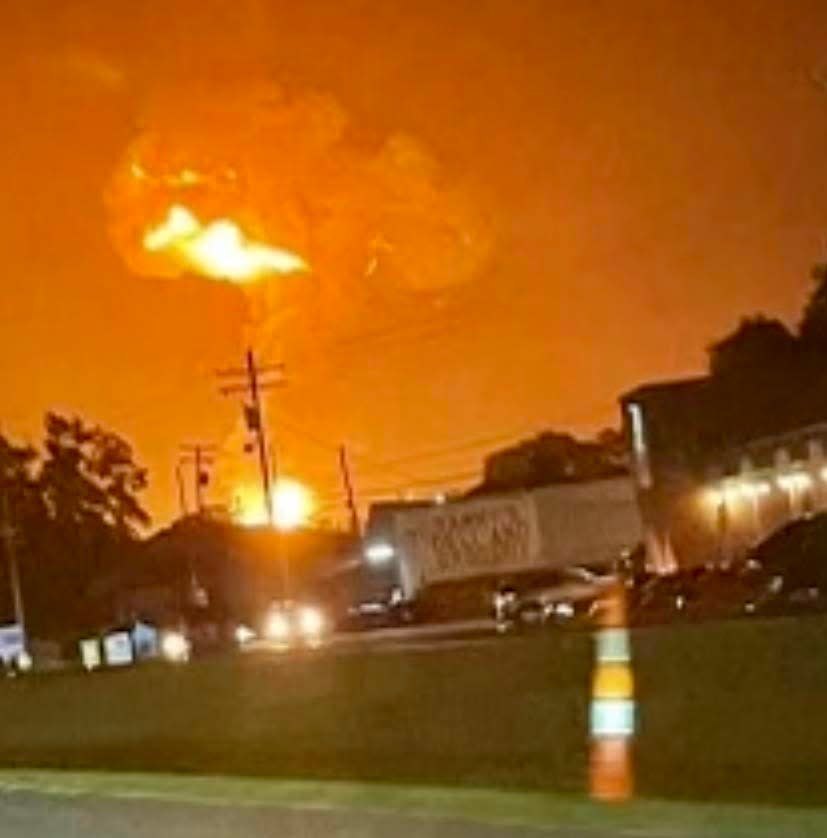Protect children from toxic chemical explosions in Memphis and beyond | Opinion
Weeks after a Dow Chemical plant near Plaquemine, Louisiana, exploded in a towering fireball, company officials remain so worried today about the toxic air that they will allow only essential personnel inside the 1,500-acre site.
I read this alarming news at home in Memphis while getting my son ready for camp. My first thought was: this could happen here.
Officials said that the explosions near Baton Rouge occurred after a fire broke out in a part of the plant that handles ethylene oxide (EtO).
That’s the same chemical used by the Sterilization Services of Tennessee (SST) plant six miles from our house and even closer to my son’s school.
My fears about a potential catastrophe aren’t unfounded. After all, toxic chemical incidents happen every two days in the U.S.
Kids are vulnerable to long-term effects of exposure
The recent fire at the Valero Refinery in South Memphis was a sobering reminder of how close we live to potentially dangerous facilities.

But I also know that the greatest threat that the Sterilization Services plant poses to my family isn’t the risk of an explosion or a fire, though that would be terrible. More worrying is the steady invisible emission of highly carcinogenic ethylene oxide into the air we breathe. Colorless and odorless, ethylene oxide is a gas used in the production of plastics, antifreeze, detergents, and other petrochemicals.
It is also used to fumigate spices and sterilize medical equipment, which is ironic given that it contributes to more cancer cases in the US than any other air pollutant.
A 2016 assessment by the Environmental Protection Agency (EPA) found that exposure to ethylene oxide is significantly more toxic than previously understood, and last year, the agency released a list of two-dozen cities in the U.S. where commercial sterilization facilities deploy this chemical at amounts that put the health of nearby communities like mine at risk.
As my Congressman, Steve Cohen, recently wrote to the sterilization plant's general manager: “With the knowledge that EtO is 60 times more hazardous than previously thought, the community near SST is rightfully anxious.”
Children are especially vulnerable to the potential long-term neurological effects of ethylene oxide exposure, and my son is just one of the many kids in Memphis impacted. The pollution from the sterilization facility near my home threatens a population-dense area that includes 183 schools and childcare centers.
Nationwide, in cities like Laredo, Texas, and Groveland, Florida, more than 10,000 schools and childcare centers are situated within five miles of ethylene oxide-emitting facilities.
What the federal government is doing
Fortunately, the EPA is taking initial steps toward action.
In April, the agency proposed new requirements for 86 commercial sterilizers across the country.
These protections could cut the amount of ethylene oxide spewing into nearby communities by up to 80%. This move wouldn’t just be a win for public health — it would also be a step toward environmental justice across the country.
Facilities that emit this toxic pollution tend to be located in communities of color and low-income communities.
According to a report by the Union of Concerned Scientists, approximately 130,374 people live within five miles of the sterilization plant here in Memphis.
About 87% of them are people of color and the poverty rate in the ZIP code where this facility sits is almost three times higher than the national average.
Urge our elected officials to act
EPA is working now to turn its proposed protections into a final rule, but we need them to work quickly. The cost of inaction is cancer.
The official comment period has closed, but there are still ways to push the EPA for strong, timely protections in what is called a “consideration period.”
Educate your neighbors. Post on social media. Call your elected officials at every level of government to share your concerns — they work for you. These actions build a groundswell of support that send a message to EPA: We can’t wait any longer for protections against a threat we couldn’t see coming.
As a mother, I’m frustrated that there isn’t more I can do on an individual level to protect my son.

When the smoke of summer’s Canadian wildfires crept south, I knew that our N95 masks would protect us. But ethylene oxide is unseeable and odorless, and even commercial grade masks can’t protect our children from its terrible toll.
Isabel González Whitaker is the associate vice president for public engagement for Moms Clean Air Force, a community of more than 1 million parents united against air and climate pollution. She is also Director of EcoMadres, a national community of parents acting together to protect the health of Latino families from air pollution and climate change.
This article originally appeared on Nashville Tennessean: Protect children from toxic chemical explosions in Memphis and beyond

